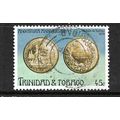Lifeboat - Sheringham Private Lifeboat Henry Ramey Upcher - postcard, 1980
- Condition : Used
- Dispatch : 2 Days
- Brand : None
- ID# : 140807328
- Quantity : 1 item
- Views : 179
- Location : United Kingdom

- Seller : justthebook (+1704)
- Barcode : None
- Start : Wed 08 Jul 2015 00:35:55 (BST)
- Close : Run Until Sold
- Remain : Run Until Sold
More Listings from This Seller view all
Seller's Description
- Postcard
- Picture / Image: Sheringham Private Lifeboat 'Henry Ramey Upcher' built 1894 and served until 1935
- Publisher: Poppyland Publishing & D. Cleveland, 1980
- Postally used: no
- Stamp: n/a
- Postmark(s): n/a
- Sent to: n/a
- Notes / condition: slight wear but no major faults
Please ask if you need any other information and I will do the best I can to answer.
Image may be low res for illustrative purposes - if you need a higher definition image then please contact me and I may be able to send one. No cards have been trimmed (unless stated).
------------------------------------------------
Postage & Packing:
Postage and packing charge should be showing for your location (contact if not sure).
No additional charges for more than one postcard. You can buy as many postcards from me as you like and you will just pay the fee above once. Please wait for combined invoice. (If buying postcards with other things such as books, please contact or wait for invoice before paying).
Payment Methods:
UK - PayPal, Cheque (from UK bank) or postal order
Outside UK: PayPal ONLY (unless otherwise stated) please. NO non-UK currency checks or money orders (sorry).
NOTE: All postcards are sent in brand new stiffened envelopes which I have bought for the task. These are specially made to protect postcards and you may be able to re-use them. In addition there are other costs to sending so the above charge is not just for the stamp!
I will give a full refund if you are not fully satisfied with the postcard.
----------------------------------------------
Text from the free encyclopedia WIKIPEDIA may appear below to give a little background information (internal links may not work) :
*************
Sheringham Lifeboat Station is an RNLI operated lifeboat station located in the town of Sheringham in the English county of Norfolk.[1] Since 1992, the station has been inshore operations only - currently with an Atlantic 85 rigid inflatable - offshore lifeboats are to the east at Cromer and the west at Wells-next-the-sea.
In its history there have been two Bronze Medals and 1 Silver medal awarded to crew by the RNLI.
The current lifeboat station was built in 1936 to replace a smaller older one which was located at the Old Hythe lifeboat house within the town of Sheringham.
Henry Ramey Upcher was the second private lifeboat to be stationed in the English town of Sheringham in the county of Norfolk[3] She was launched on 4 September 1894[4] and stayed on station for 41 years until she was slowly retired from duty and by 1935[5] had ceased rescue work completely. The Lifeboat is now on permanent display in her own museum housed in her converted original boat shed.
Uniquely Sheringham has had in the past two lifeboat services running at the same time, one private and the other operated by the RNLI. The lifeboat Henry Ramey Upcher was the boat of the private service. This lifeboat was the gift of Mrs. Caroline Upcher of Sheringham Hall, donated to the fishermen in memory of Mrs. Caroline Upcher's husband Henry Ramey Upcher.
Henry Ramey Upcher was built by Lewis 'Buffalo' Emery of Sheringham at a cost of £150.[5] Her keel was laid down on the 4 April 1894[5] after a search had taken several months to find a suitable piece of wood to mould the keel. This was marked with a ceremonial driving of the first nail by Miss Upcher and Mrs Russel Upcher. The boat was built in the style of the local crab fishing boats using local oak for the planking and copper fasteners. The boat was 39 ft 8 in (12.09 m) long and 11 ft 3 in (3.43 m) wide and was double ended.[5] She was powered with 16 oars and she was fitted with a large dipping lug mainsail and a mizzen. She was much lighter than the RNLI’s lifeboat William Bennett who was on the Sheringham station during this period. Difficulties with launching the RNLI boat also made her faster to launch. These two factors made her very popular with the fishermen that crewed her. On the downside, her extra width tended to make her more liable to ship water in severe conditions and so was less suitable than the RNLI boats in heavy seas. Her naming ceremony took place on 4 September 1894[5] by Mrs. Upcher. When launched the crew of the Henry Ramey Upcher commonly consisted of 28 men. This was a coxswain, second coxswain and 16 oarsmen; a further 8 men tended the sails and two worked the pumps near the stern.
The lifeboats christening took place on the 4 September 1894[5] and was performed by Mrs. Caroline Upcher. The lifeboat was blessed by the Rev. Arthur Upcher, who was the youngest brother of Henry Ramey Upcher. The ceremony was watched from the cliffs and gangway by hundreds of local people. After the ceremony, in squally weather the lifeboat was launched for a short demonstration where she was tried under sail and oar, with Coxswain Barnes Cooper at the helm and crew of thirty.[5] The Henry Ramey Upcher launched to over 50 services and she worked closely with the lifeboats, William Bennett and J.C. Madge of the RNLI. She remained in service until 1935 and she saved over 200 souls.[5]
The Henry Ramey Upcher built itself an excellent reputation with the local fishermen up and down the North Norfolk coast. This reputation was built on the work carried out by the private lifeboat whilst helping distressed fishing vessels. The lifeboat men, being fishermen themselves were fully aware of the consequence to a man and his immediate family if a boat was lost at sea. With this in mind the Henry Ramey Upcher, unlike the RNLI boat, would go to great lengths not only to save the fisherman, but also their gear and boat. An example of this took place in 1913 when the lifeboat was launched to rescue the three crew of the fishing boat Lilian of Sea Palling. The Fishermen were saved along with their nets. The lifeboats crew recovered the boat and even managed to take aboard the catch of Mackerel. This they carried up from the sea and sold the catch for him. One of the saved fishermen said that he would always appreciate the men of Sheringham and what they had done for him. Had they had lost their boat and nets it would have meant a loss of at least £50, a large sum of money in 1913.
Apart from the service rescues to the local fishing vessels, in 1896 the lifeboat was called out to help four steamships in distress. The most difficult of these was to the steamship Commodore which took place on the 7 November 1896. The steamship had been driven on to the shore half a mile to the west of Sheringham at Old Hythe. The Commodore had not been alone in her distress in the moderate gale that was blowing. Two other ships had also grounded but had managed to refloat themselves. The Lifeboat launched to the steamers assistance and took of fourteen crew members safely along with three local fishermen who had gone to assist the ship early and got stuck aboard in the prevailing storm. The lifeboat landed the men in Sheringham at two in the morning. The gale proceeded to increase throughout the next day and by the next evening the Commodore became a total wreck. She remained stuck on the beach for seven years after until declared a hazard to shipping she was blown apart.
On the 23 January 1897 the Norwegian brig Ispolen[6] carrying a cargo of Ice, was under some distress. The Ispolen had been running through a storm for two days and had shipped a lot of water during that time. She had made for the coast hoping to seek help and headed for a steamer that was anchored offshore close to Cromer. The captain’s intention was to contact the steamer to find out if there was a local lifeboat nearby who could help. Unfortunately the wind and driving rain had blown her close to the shore and the watching local fisherman realised that she would soon be on the beach and raised the alarm. The Sheringham RNLI lifeboat William Bennett could not be launched from her station as her gangway and a section of the sea wall had been washed away in the same north westerly gale the previous day. Her crew had to drag the William Bennett on her carriage to the East gangway just below Beeston Hill where she could be launched. The Henry Ramey Upcher was also prepared for launch was soon at sea with Coxswain Barnes Cooper at the helm. By now it was 1:45pm and the Ispolen had now run aground just offshore.[7] In rapidly worsening situation the Henry Ramey Upcher had moved alongside the stricken vessel, but the crew who had been completely unprepared, had no ropes ready to tether the boats together. The result of this caused the lifeboat to collide with the Ispolen violently, damaging the lifeboat’s cork fender and snapping two of her oars. The lifeboats second approach was more successful when the lifeboat managed to secure the two boats together using grappling hooks thrown into the Ispolen’s fore-rigging. Holding the boats and in considerable risk to the lifeboat the crew of eight men were able to transferred to the relative safety of the lifeboat. Shortly after the rescued men were landed at Sheringham. The news was passed on to the disappointed crewmen of the William Bennett as they were about to launch over at Beeston east gangway.
During the period of World War I performed several rescues, helping steamships and the local fishing vessels. Often locally billeted soldiers assisted with her launches. One such rescue took place on the 23 January 1915. The coal cargo ship (collier) SS Empress,[8] on route from London to Sunderland had struck and old wreck on Sheringham Shoal and was beginning to sink.[9] The steamers crew of twenty one had managed to abandon ship and had been taken aboard the nearby steamship Tullochmore. The Henry Ramey Upcher picked the men of the Tullochmore and landed them safely in Sheringham. The following day the lifeboat returned to the wreck with the captain who by now had drifted of the Shoal but nothing could be salvaged and the Empress sank in an area of the sea called the Fairway, were for many years she became a hazard to shipping at low tides.[10]
type=printed
city/ region=sheringham
period=post-war (1945 - present)
postage condition=unposted
number of items=single
size=standard (140x89mm)
Listing Information
| Listing Type | Gallery Listing |
| Listing ID# | 140807328 |
| Start Time | Wed 08 Jul 2015 00:35:55 (BST) |
| Close Time | Run Until Sold |
| Starting Bid | Fixed Price (no bidding) |
| Item Condition | Used |
| Bids | 0 |
| Views | 179 |
| Dispatch Time | 2 Days |
| Quantity | 1 |
| Location | United Kingdom |
| Auto Extend | No |
| Subject | Lifeboat |




 for 1 item(s)
for 1 item(s)

















